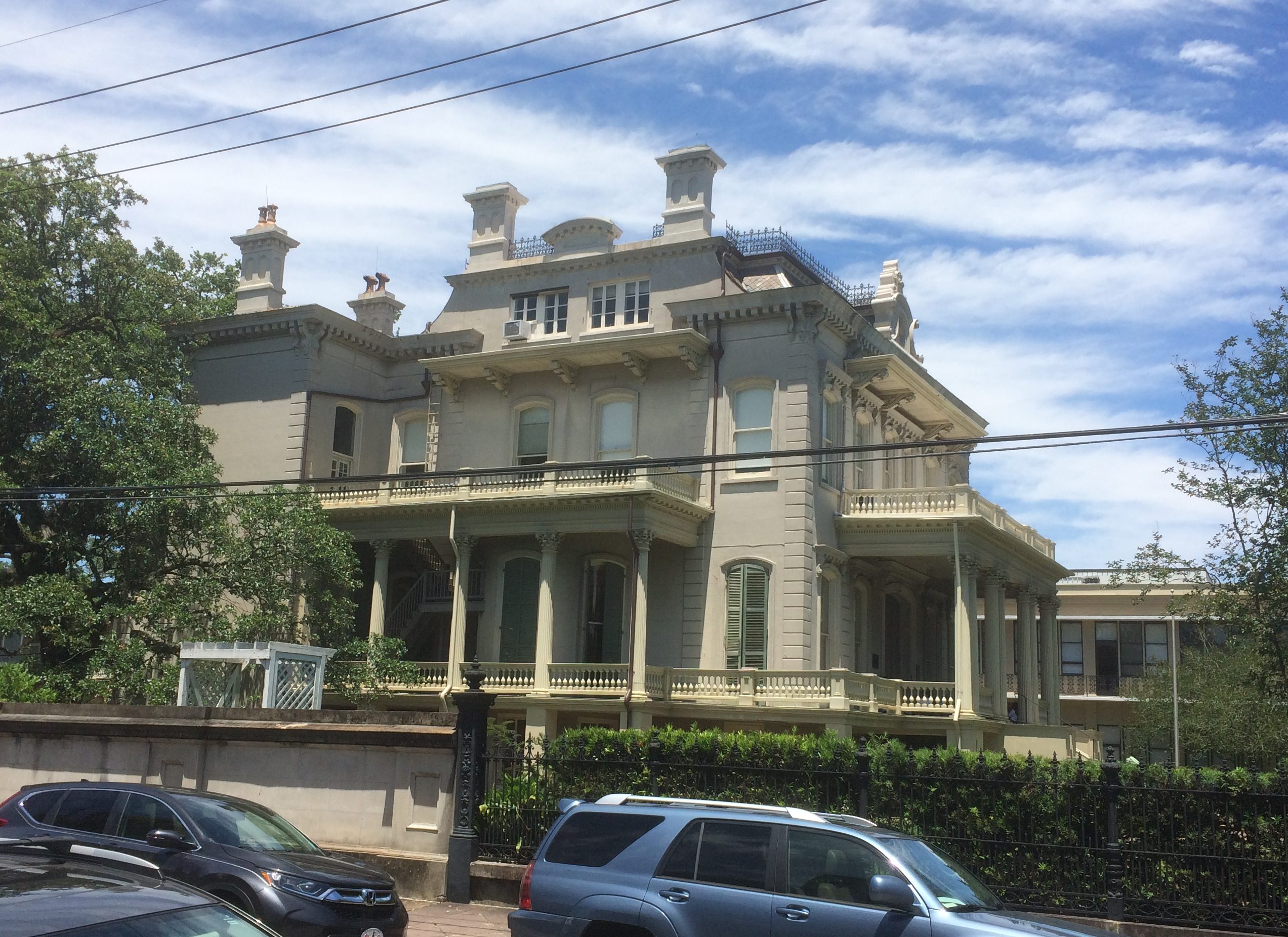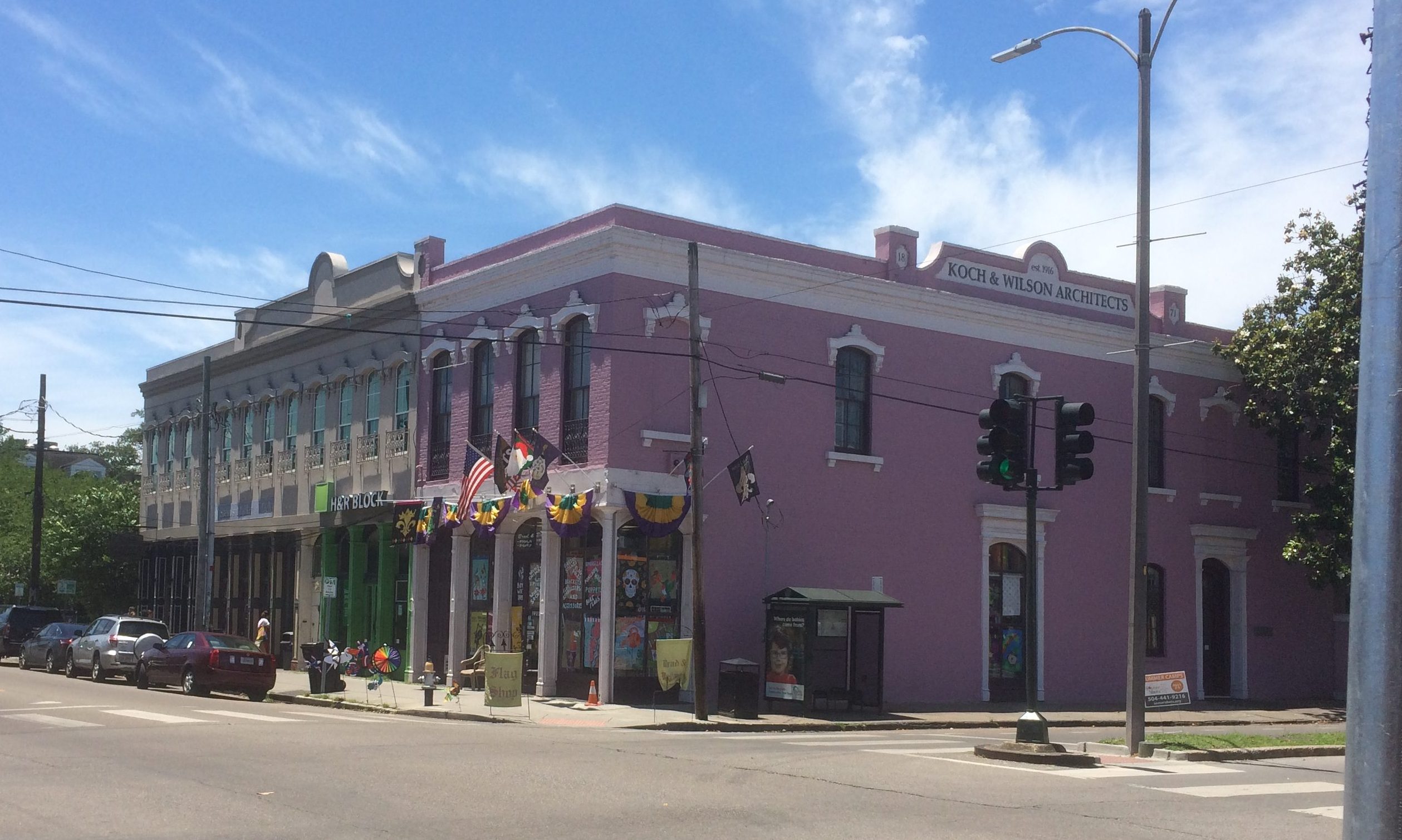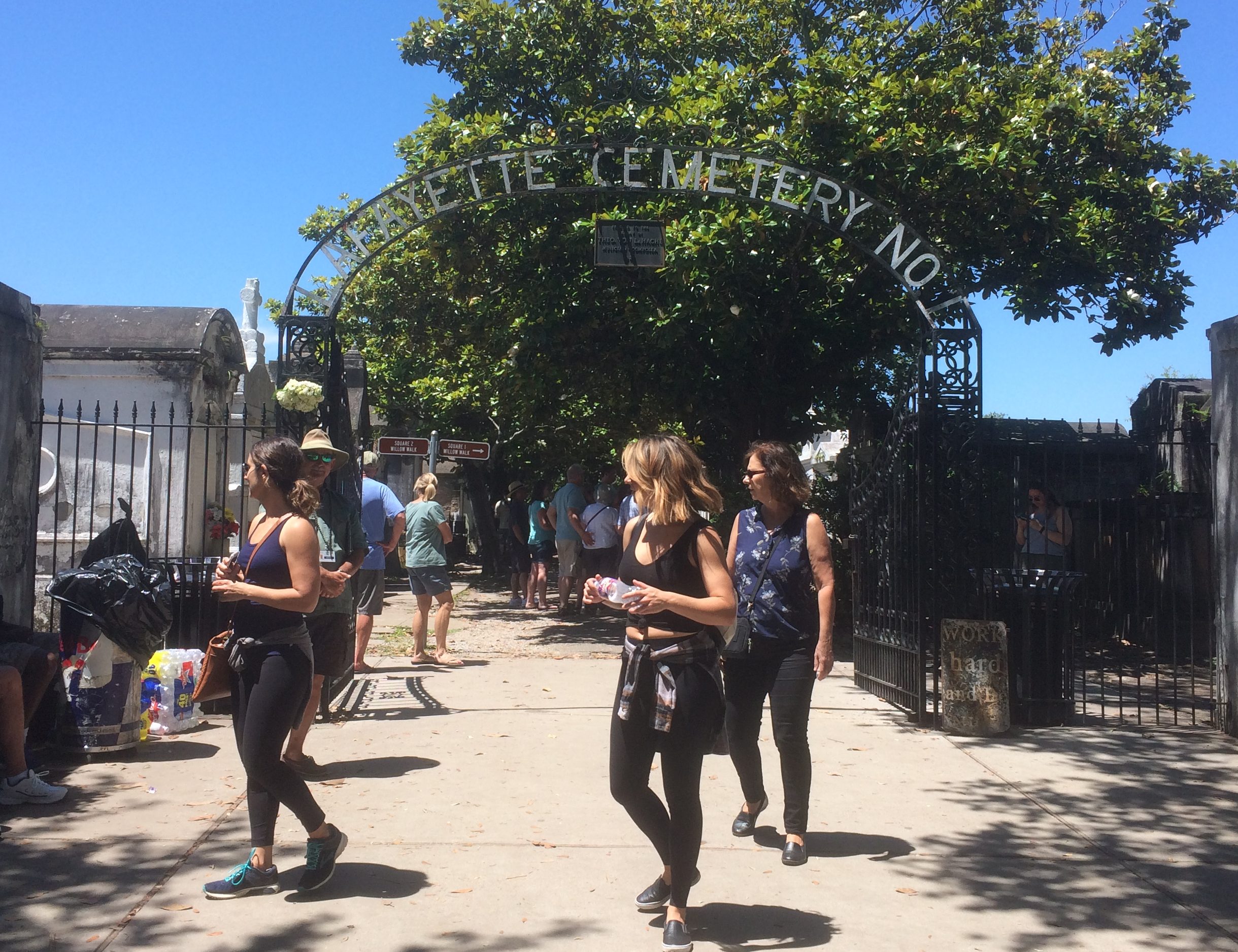Someone once warned me about the condition of the sidewalks in the French Quarter, but on the whole, they weren’t that bad. For crumbling, occasionally hazardous sidewalks, the Quarter or even Treme couldn’t compare with the Garden District. Some stretches reminded me of Mexico City in that regard.
The houses in the Garden District clearly represent a concentration of wealth, so you’d think the sidewalks would be repaired. Maybe it’s that New Orleans is a trifle lax when it comes to infrastructure, but I don’t actually know that — the idea merely fits with the city’s reputation.
Or it could be a weird municipal dynamic: the city can’t appear to put too much money into the roads and sidewalks of an affluent area like the Garden District. Bad optics. So the area’s infrastructure is a little rough. Maybe the residents don’t care much. The only people on foot in the district seemed to be tourists, singly or in tour groups.
Never mind, it’s a good place for a walk, if you pay attention, and even when the Southern sun begins to beat down, as it did late on the morning of May 14. Sometimes shade is there for the taking.
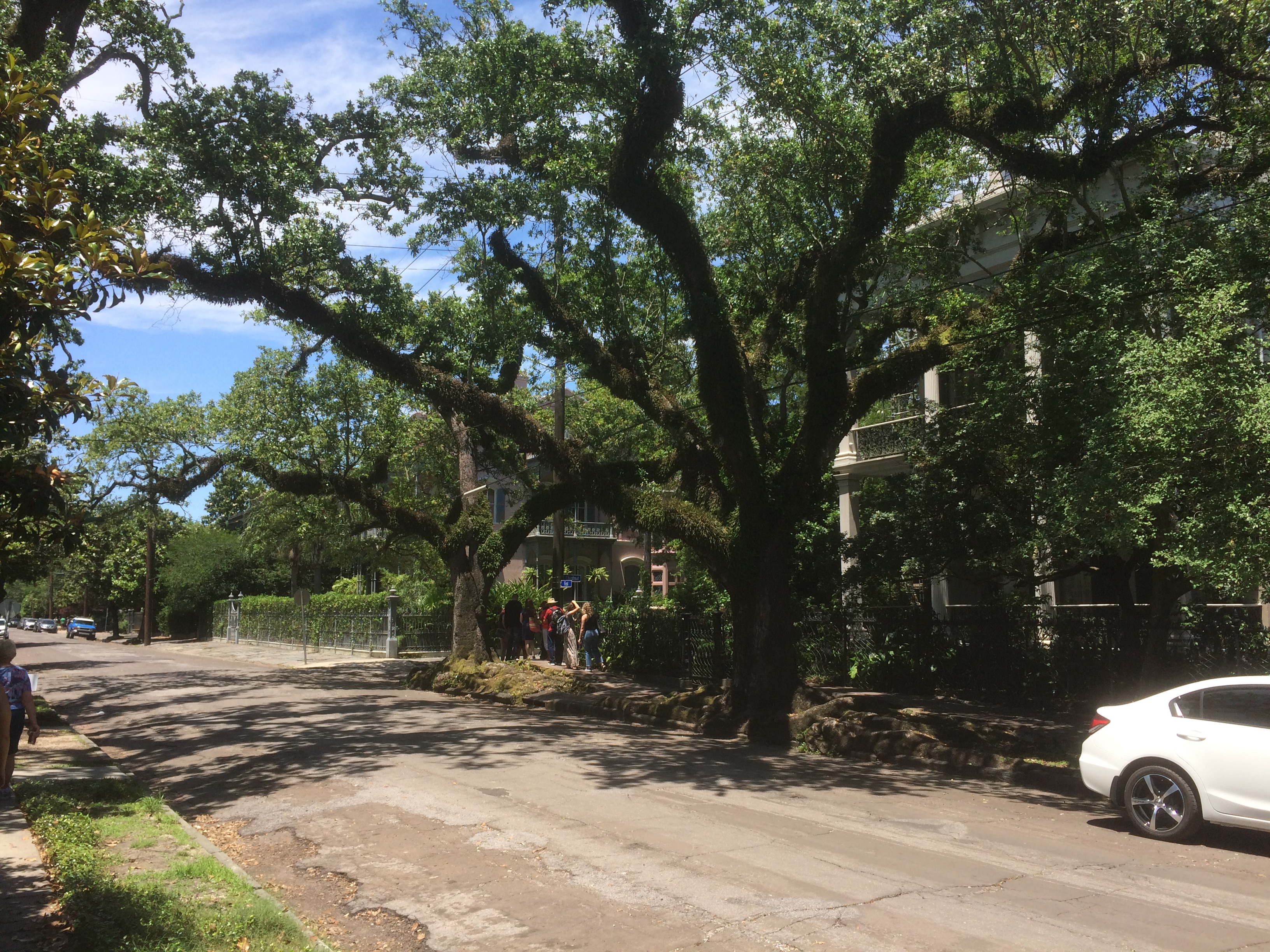 The trees part to reveal some fine houses.
The trees part to reveal some fine houses.
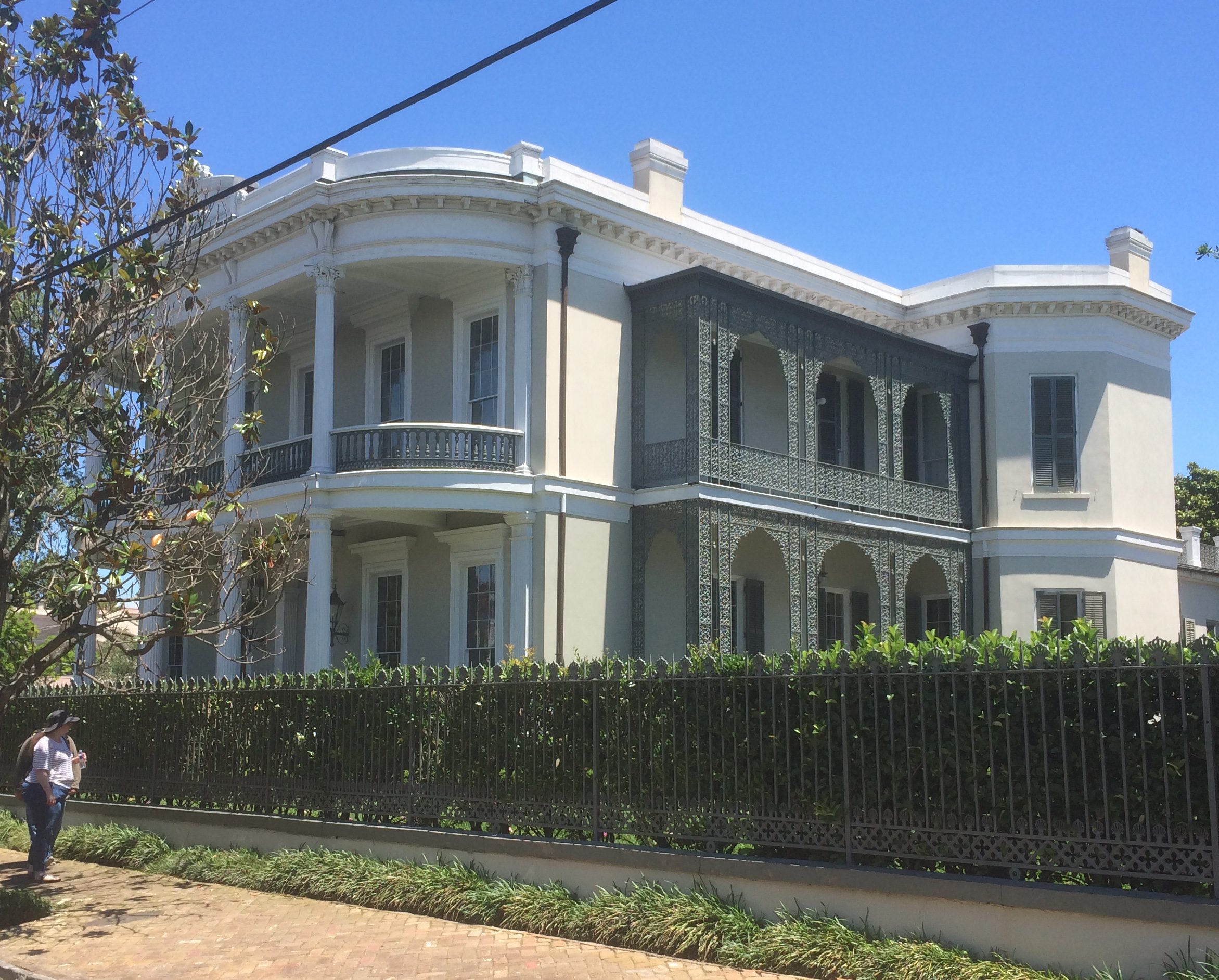
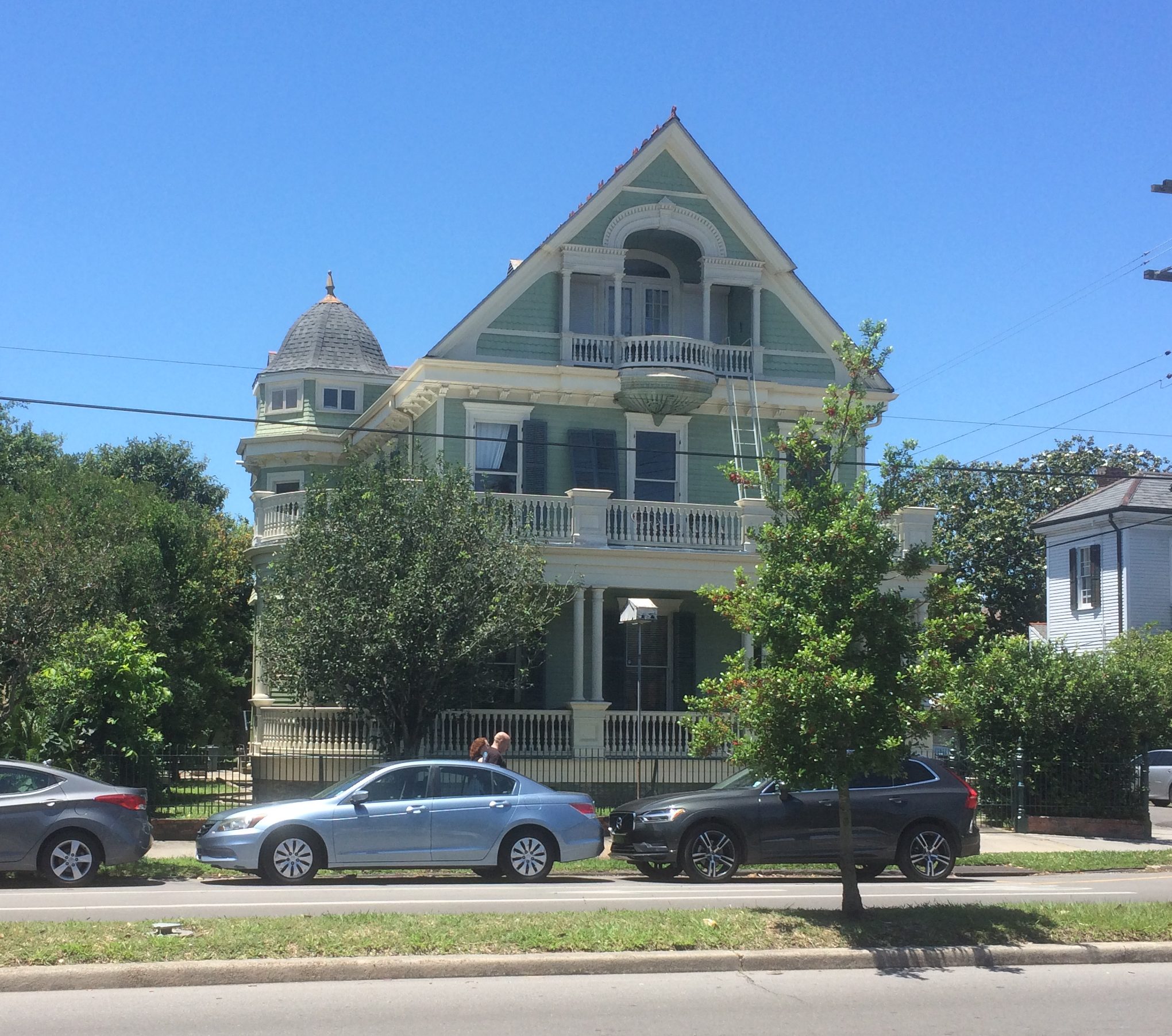
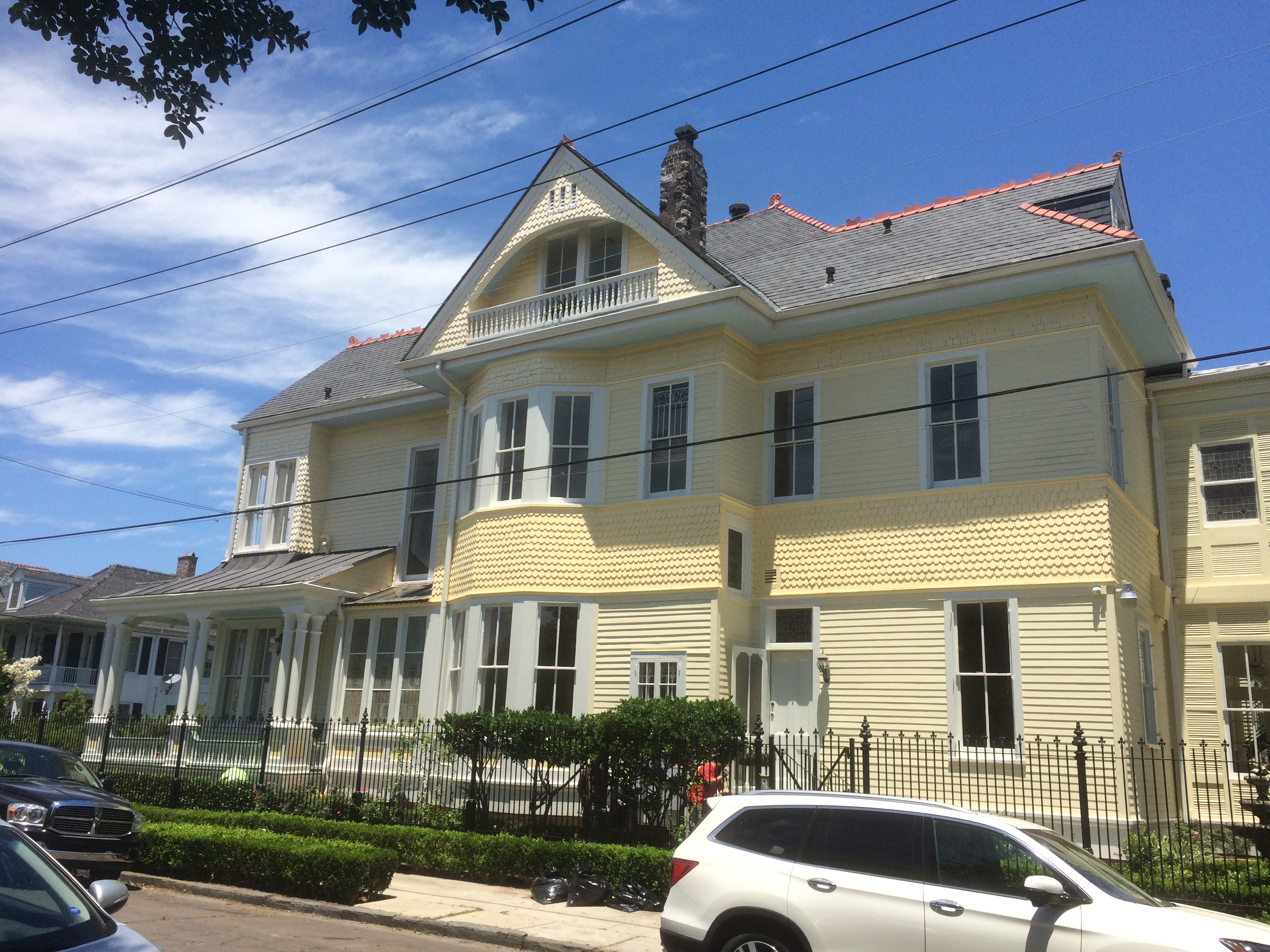
My favorite among those I saw, though of course that was a small fraction of the area’s visual richness.
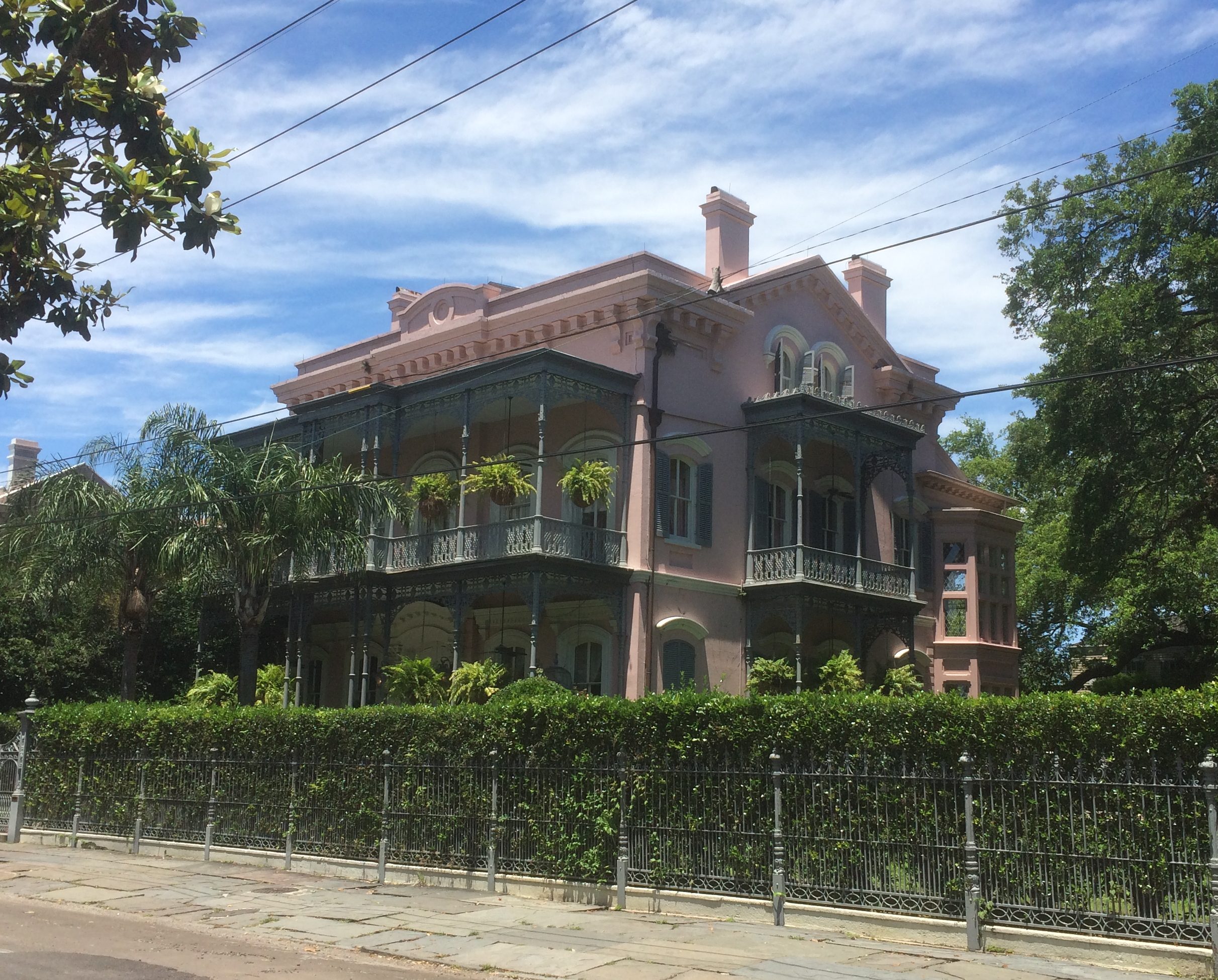 Our walk took us past some houses marked as historic, such as the Goldsmith-Godchaux House.
Our walk took us past some houses marked as historic, such as the Goldsmith-Godchaux House.
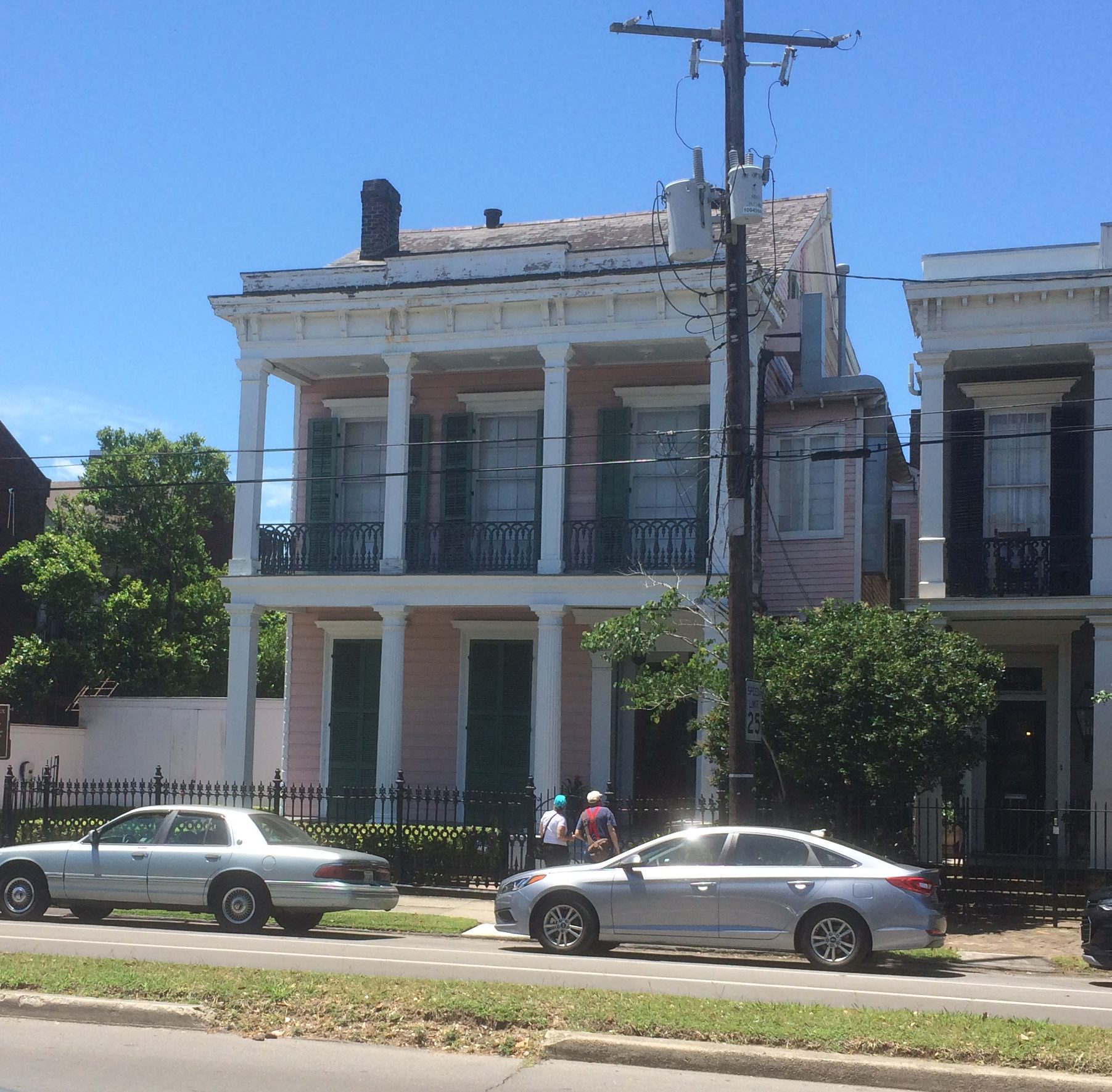 Alas, it seems to be noted more for its invisible (to us) interior than the exterior, though that’s nice enough. The plaque outside says: “Designed by noted nineteenth century architect Henry Howard in 1859. Significant for its painted interiors. Has more fresco wall decoration and stenciling than probably any other mid-nineteenth century residence in the South.”
Alas, it seems to be noted more for its invisible (to us) interior than the exterior, though that’s nice enough. The plaque outside says: “Designed by noted nineteenth century architect Henry Howard in 1859. Significant for its painted interiors. Has more fresco wall decoration and stenciling than probably any other mid-nineteenth century residence in the South.”
It occurred to me, walking along and sweating, that the Garden District represents 19th-century urban sprawl. New development is often spoken of as if it’s kudzu, which grows willy-nilly and takes over the place. This is nonsense, since residential development follows demand, though infrastructure spending helps facilitate it (in the 20th century, that means you, Robert Moses).
In any case, the demand was there after New Orleans became part of the United States, since the new English-speaking population didn’t particularly want to live with the Creoles in the Vieux Carré. They probably considered the old city an old dump.
Who started subdividing the plantations that used to be the Garden District? I had to find out. A singularly interesting character named Barthélémy Lafon, a Frenchman who seems to have skipped out on the Revolution, coming to New Orleans in 1789.
According to 64 Parishes, “Barthélémy Lafon enjoyed a long and diverse career in Louisiana as an architect, builder, engineer, surveyor, cartographer, town planner, land speculator, publisher, and pirate.”
My italics. Though it seems like he was more of a rich-man sponsor of pirates than someone who went to sea in search of booty. Even pirates need seed capital.
Down on Magazine St., we walked by some interesting commercial structures, such this one at the corner of Magazine and Jackson.
As it says, the building is home to Koch & Wilson Architects, who (I found out) are restoration specialists. Good for them. A fine thing to be in New Orleans. Among other things, the firm restored the nearby St. Mary’s Assumption. Sadly, we couldn’t get in to see that.
On the first floor of the Koch and Wilson Architects building is a flag shop, a deli and a doughnut shop (and H&R Block, but never mind). How cool a tenant roster is that?
We stopped by for doughnuts, and coldbrew coffee for Lilly. The shop served large and pricey hipster doughnuts, something not especially distinctive to New Orleans, but who cares. They were good.
Walking down Magazine, you come across this curiosity.
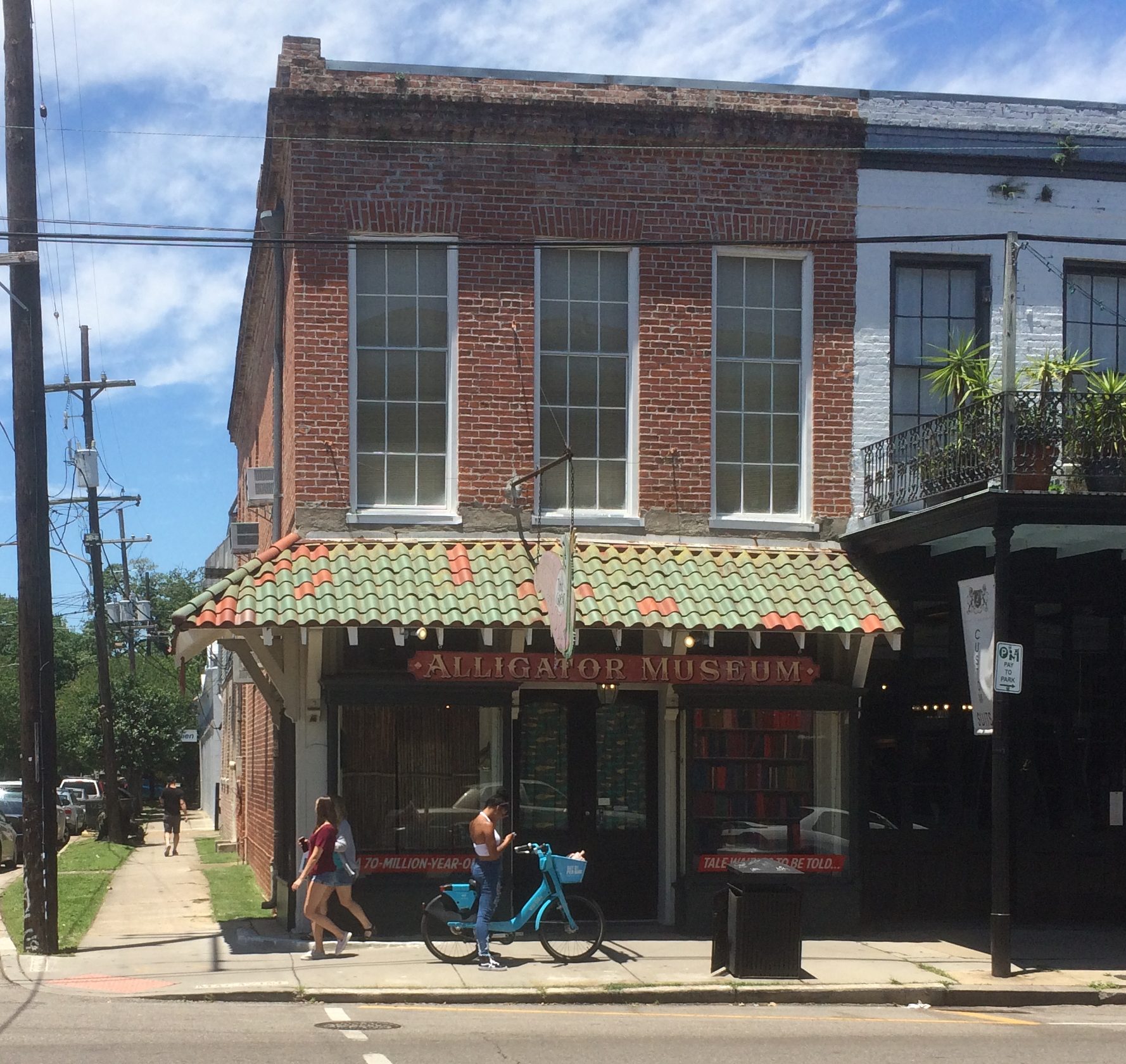 I’d look that up, but I’d rather not know exactly what you’d see there. We all need a little mystery, even in the age of Google.
I’d look that up, but I’d rather not know exactly what you’d see there. We all need a little mystery, even in the age of Google.
Down the other direction on Magazine is a joint after my own heart, but we didn’t stop in.
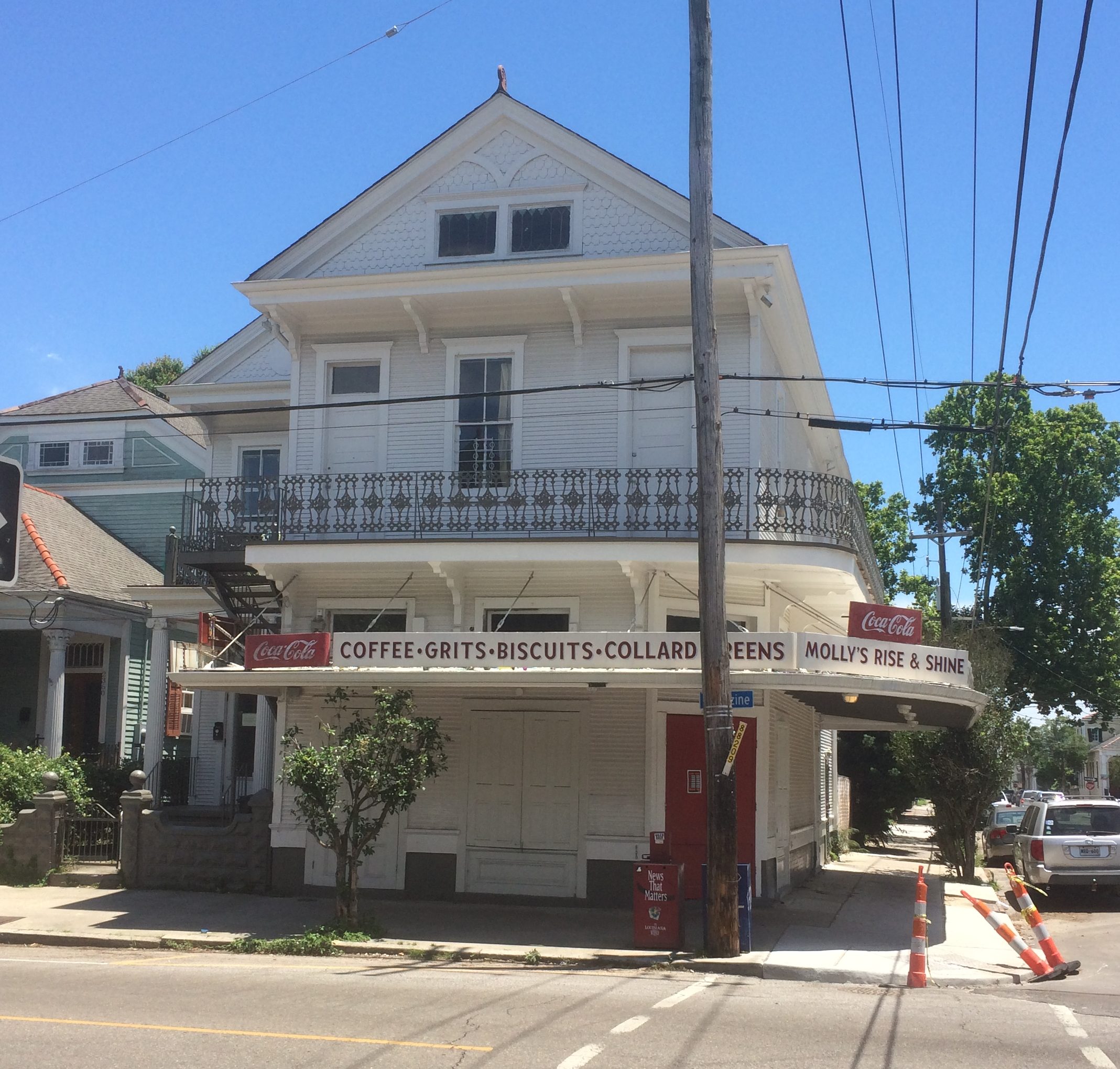 I couldn’t visit the Garden District without dropping in on Lafayette Cemetery No. 1. It was a more popular place than most cemeteries I’ve been to.
I couldn’t visit the Garden District without dropping in on Lafayette Cemetery No. 1. It was a more popular place than most cemeteries I’ve been to.
The collection of tombs is similar to that of Saint Louis Cemetery No. 1, a mix of maintained and crumbling examples.
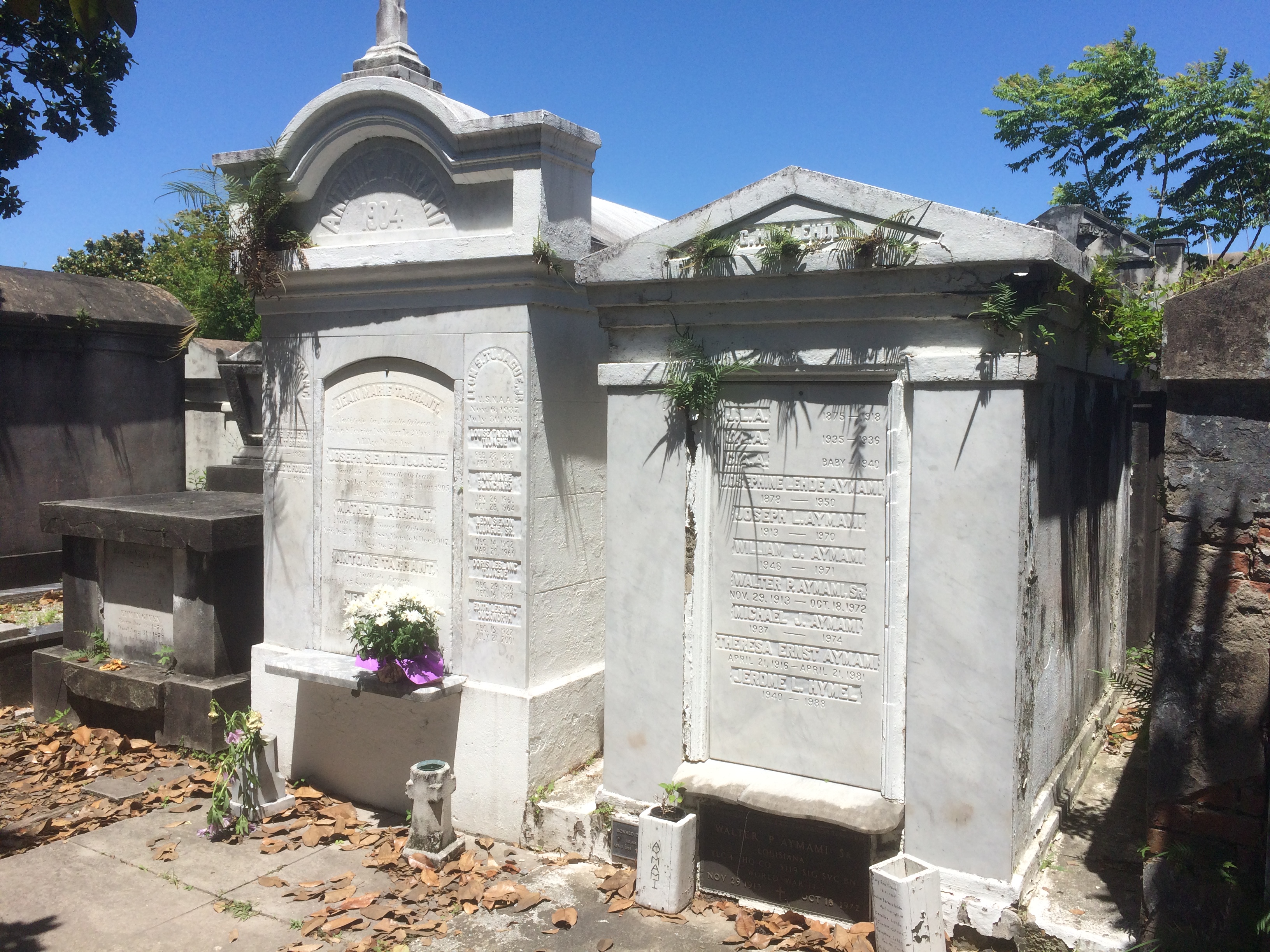
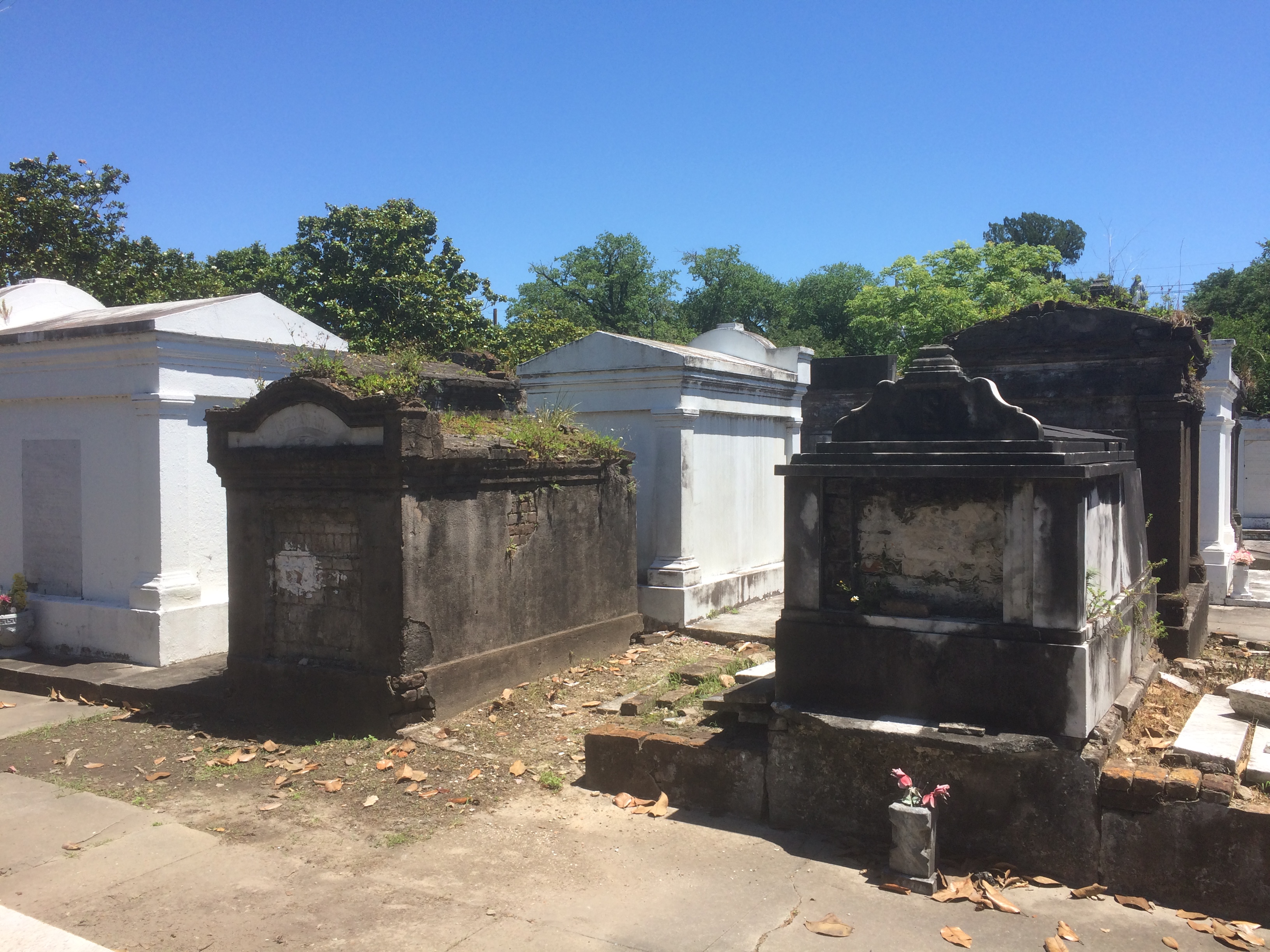 The cemetery had better shade than Saint Louis, mostly in the form of sheltering magnolias, and wider avenues of the dead in some places.
The cemetery had better shade than Saint Louis, mostly in the form of sheltering magnolias, and wider avenues of the dead in some places.
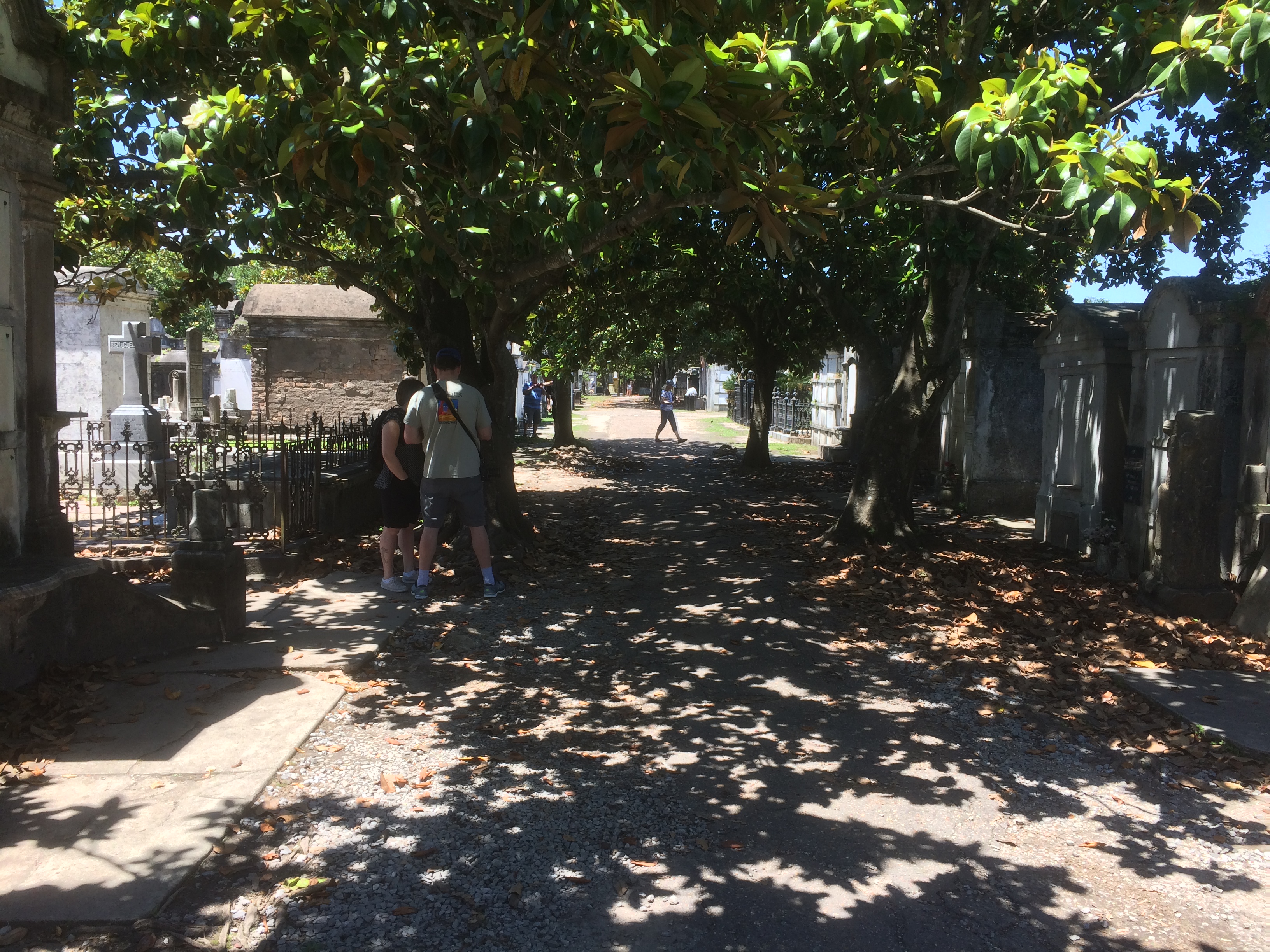 Lafayette Cemetery No. 1 also has some collective tombs. This one says Jefferson Fire Company, 1852.
Lafayette Cemetery No. 1 also has some collective tombs. This one says Jefferson Fire Company, 1852.
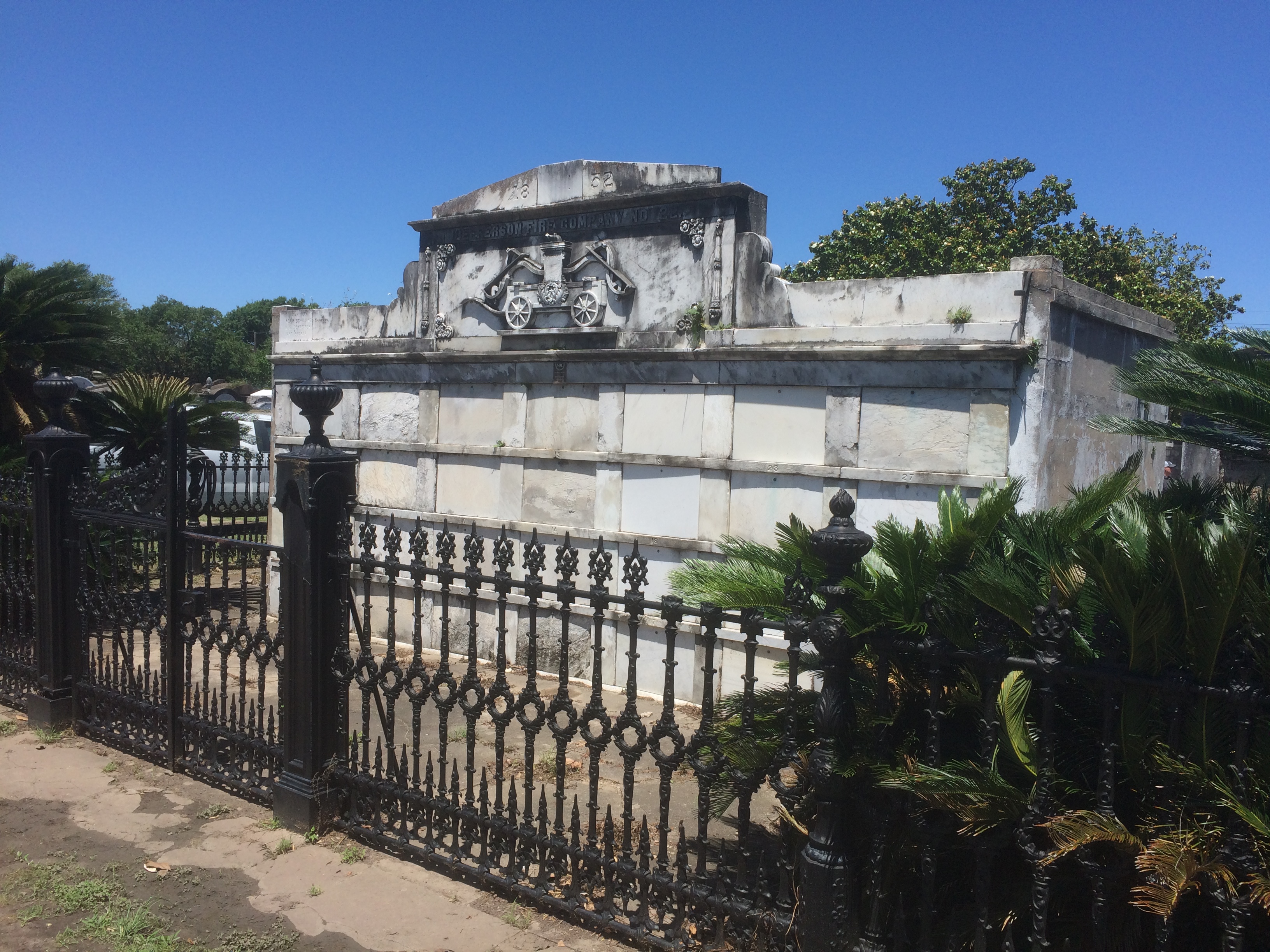 Here’s one for orphans.
Here’s one for orphans.
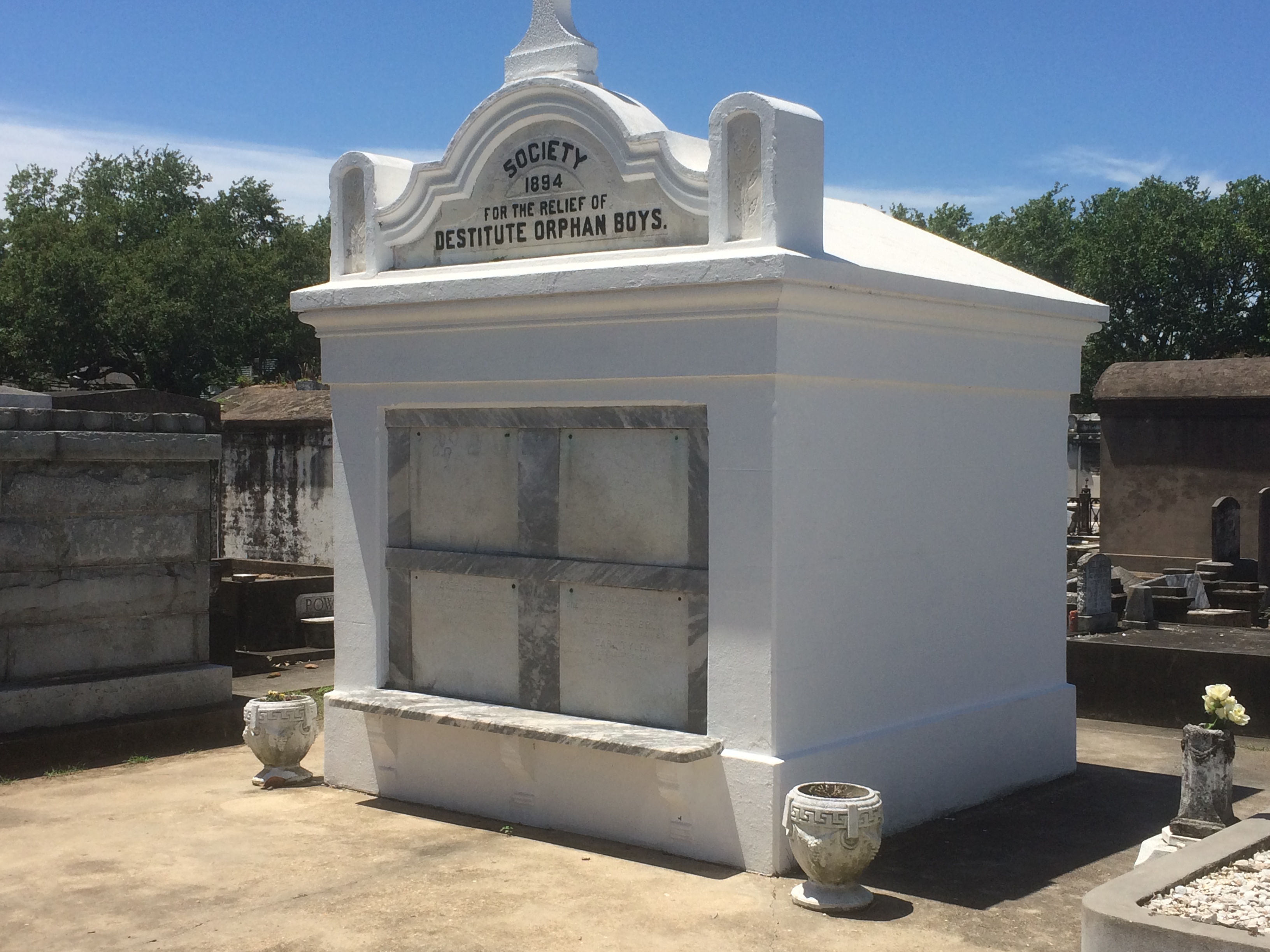 Society for the Relief of Destitute Orphan Boys, 1894. If that isn’t Victorian nomenclature, I don’t know what is.
Society for the Relief of Destitute Orphan Boys, 1894. If that isn’t Victorian nomenclature, I don’t know what is.
